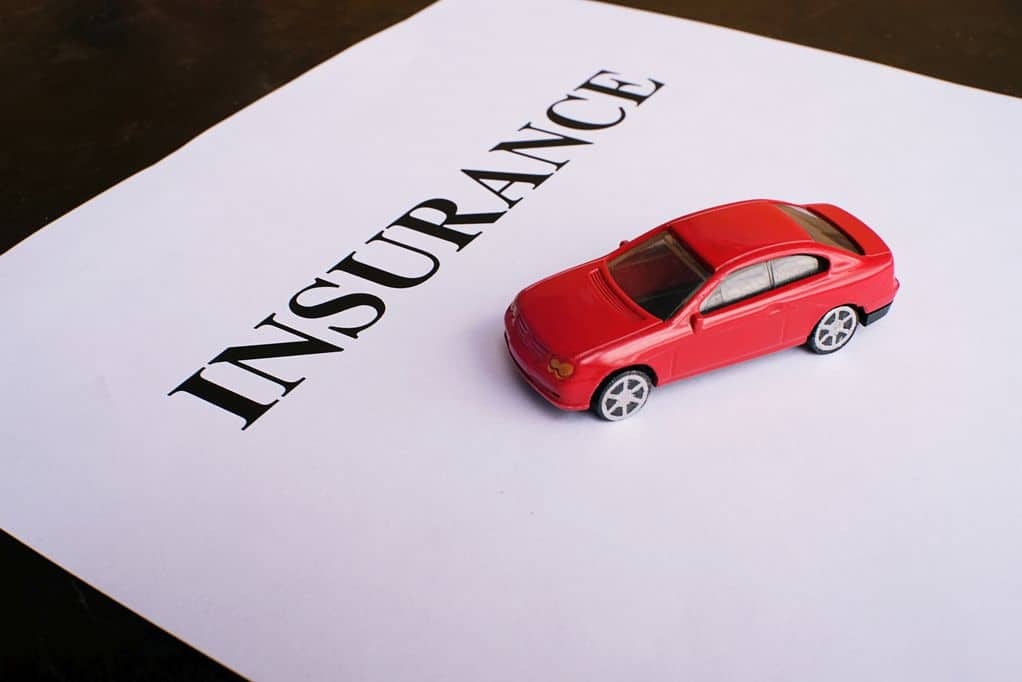4 January 2020 Concept Car
Cars have become a lot safer. Thanks to a plethora of technological innovations, the chances of getting caught in a crash or accident have continually decreased over the years. This is why car insurance is so vital.
And yet, as reassuring as statistics may be, you can never entirely rule out a stroke of fate. At one point or the other, almost all of us will be part of a crash.
According to recent data, your chances of getting killed in a traffic incident are 1 in 200. Or 2,8 deaths per 100,000 people. But what about non fatal crashes?
According to Forbes, however, the risk of a non-serious incident are a lot higher:
“If you got your license at age 16, the odds are quite good that you’ll experience some kind of crash by the time you’re 34, at the latest. Over the course of a typical long, driving lifetime, you should have a total of three to four accidents.”
Uk roads are among the safest in the world. Still, car insurance, even in the 21st century, remains vital. In this special, we’ll take an in-depth look at them. Here’s what you can expect.
It’s not as though you have a lot of choice, either. As in most countries, car insurance is mandatory in the UK.
Although inconvenient to some, this makes a lot of sense, too. If you ever get caught up in a traffic accident, the costs can be disastrous. There are medical bills to pay. Repairs to be made. And if you’re at fault, you won’t just need to cover your own costs, but those of the other party as well.
All in all, a car accident can lead you straight down the road to financial ruin.
It’s a simple trade-off, really: You pay a monthly sum towards your insurance. And in return, the policy supports you in case of an emergency. You may never need to make a claim. And should you cause a crash, the damage may be too small for your insurance to kick into effect. Still, it is an extreme relief to know that should things ever get nasty, you don’t need to worry about bankrupting yourself.
Sounds simple? Unfortunately, it isn’t. Although every driver in the UK needs to take out some form of insurance policy, this still leaves quite a few questions open:
In this special, we’ll try to answer all of these questions – and a few more. After you’ve read it, you’ll know you need on car insurances and be able to make an informed choice.
Sounds good? Then let’s get started!

As we already established, you actually need to take out a car insurance policy. There are very few things quite as elementary, in fact.
Before Ford entered the market, cars were mainly extremely expensive toys driven by a handful of daredevils and eccentrics. After Ford introduced its Model T in 1913, however, the ball got rolling fast. More and more people started to invest in a car. They were further helped by Ford’s policy to entice workers at its factory to buy a Model T at a great price.
Already in 1930, the Road Traffic Act contents forced every driver in the UK to buy car insurance. Admittedly, the UK were pioneering the concept. Even in Germany, a similar law would only come into effect nine years later. But the mere fact that the government considered it so important so early as to force everyone to take out an insurance policy speak books about the urgency of the topic.
As with other laws and requirements, which are mandatory on paper, drivers throughout the decades have tried to get around this one. There are many reasons why you would not want car insurance. The most obvious one is that it generates costs. And some either can’t or don’t want to pay them.
The practical consequences of this defiance are dire. Should you cause a car accident, you may not just injure others. You may also ruin them or yourself financially. The not-at-fault party would, after all, usually be compensated by your insurance. If you do not have one, you will have to come up with the money yourself. If you don’t have the required amount of cash at your disposal, no one gets paid. This is obviously a significant problem.
To prevent this from ever happening, the penalties for not insuring your car are severe. In fact, there is no predefined maximum sentence for this. Which means the police can take your car away from you, disqualify you from ever driving again. Or they can simply add a lot of penalty points to your licence.
But it is not just a crime to skip on car insurance altogether. In an effort of trying to be clever and save money, some UK drivers are engaging in a type of insurance fraud called ‘fronting’.
Fronting is admittedly not as bad as not taking out a vehicle insurance altogether. But it is still a serious misdemeanour and you should avoid it by all means.
When you apply for car insurance, the height of your monthly payment is determined by taking into account various risk factors. These include your age, (sometimes) gender, driving experience, the type of car you drive and the neighbourhood you live in. Depending on these factors, your instalments can either be very expensive or very low.
Fronting occurs when your premium would be very expensive and you therefore ask someone else to take out the policy instead. If you’re 18 and have just secured your driver’s license, for example, your premium will be extremely high. The insurer simply has no way of telling whether you’re a safe driver or a reckless one.
Fronting occurs if you ask any other person with a spotless driving record to step in for you. If that person also lives in a safe neighbourhood, this can bring the premium down considerably.
Fronting can make a huge difference financially. But as with not taking out car insurance at all, the penalty is severe. There are no mitigating circumstances here. Sharing a car with someone else is possible. But you really need to be the main driver. If you and, say, your mother are both using the vehicle, but you’re using it more often than she is, you need to be the one taking out the insurance, not her.
The solution is simple: Just don’t do it. Or, do as Moneysupermarket advises:
“You can piggyback on your parent’s policy as an additional driver. Your mum or dad will pay more for their cover, but it will still be cheaper than a policy in your own name.”

Now we’ve firmly established there is absolutely no way around vehicle insurance, it is time to take a look at the different types of car insurance there are.
For starters, there are three basic variations. All of them will meet government requirements. And yet, each of these alternatives offers a different level of coverage.
To understand the basic concept behind vehicle insurance in the UK, you need to be aware that it’s not about you. It may sound harsh, but the government are not interested in the least whether or not you can afford to pay for the necessary repairs after a crash. What’s important from their perspective is that you are financially able to take responsibility if you’re found to be at fault for an accident involving a third party.
This is why the minimum vehicle insurance only covers damages for the other party involved in the crash. This is different from other countries. In the USA, physical injuries and material damages are separated. A third party insurance in the UK, meanwhile, includes both injuries to people and damages to the property of others.
If you really can not afford to pay more than the bare minimum, then a third party insurance is an acceptable choice. However, it is very limited in scope. If, on the other hand, you would like to have more protection, consider the following option.
The name says it all here. The next level of vehicle insurance doesn’t merely include costs caused by a crash. It also covers for a replacement vehicle should your car get stolen or burn down in a fire.
Obviously, it’s better to be safe than sorry. There are a lot of possibilities to protect yourself against theft. See our special on how to protect yourself against a car break in.
So, intuitively, this does not sound like something you absolutely need.
According to the fire service, “every year in the UK, over 100,000 cars which equates to nearly 300 a day go up in flames and around 100 people die as a result. Around 65% of these fires are started deliberately to cover criminal activity, to make a fraudulent insurance claim or as an act of vandalism. One in 12 reported stolen vehicles will be burnt out.”
That’s a lot of burning cars!
Recent data has demonstrated, that car theft can be up to twice as high in some areas as in safer environments. This is part of the reason why insurance companies charge considerably different premiums depending on where you live. In some parts of the UK, up to almost 14% of cars get stolen. That’s every 7th car!
Taking these statistics into consideration, a third party, fire and theft policy can suddenly sound perfectly reasonable.
This is the third and highest level of vehicle insurance coverage you can get. It builds on the third party, fire and theft policy mentioned above and adds a few more elements to the equation.
Most importantly, it includes liability for your own damages and potential injuries. Obviously, this is a big deal. You may just about be able to do without a car. But when it comes to medical bills, not being able to pay is a serious issue.
With a comprehensive car insurance package, the most disastrous effects of a crash are usually covered. Still, there are choices you need to make.
For one, you will need to decide your deductible – i.e. how much of the total damages you will pay for yourself. We’ll get to that in a second. Also, you need to set a maximum amount of coverage for the insurance. You see, even a ‘comprehensive’ insurance has its limits. This amount can either be set at 50,000 or 100,000. It all depends on your financial capacities.
There are also a few additional insurances you can add to your comprehensive package. Let’s take a look at all of these things now. This should help you arrive at a clearer picture of what you need and what you don’t.

When buying an insurance policy, some people expect this to cover every penny of damages. This is now how it works, however.
An insurance only kicks in after the damages exceed a so-called deductible. If the damage is less than your deductible, you cover for everything yourself. Should the damage be higher, meanwhile, you still pay the deductible. The insurance company will only cover the remainder of the tab.
The basic idea behind a deductible is that it makes you want to drive more carefully. After all, you will have to pay for part of the damages out of your own pocket.
The deductible is also a great tool for adjusting the risk according to your preferences. The smaller the deductible, the smaller your risk and the higher the risk of the insurance company. This obviously means that a lower deductible raises your monthly payments. And a higher deductible reduces them.
Some recommend setting the deductible at around £1,000. This is not a bad guideline. But you will need to do the maths for each single offer. A £500 deductible may actually turn out to be cheaper than a £1,000 one!
How is this possible?
Let’s imagine you cause a car crash. With the higher deductible, you will now have to pay £500 more than with the lower one. So as long as you save in excess of £500 through your lower monthly contributions, the higher deductible is beneficial. But if it only saves you a few quids in total, then you’ll lose money.
Also, as The Balance wisely stresses: “A $1000 deductible is not going to be helpful to you if you do have a claim and cannot afford the deductible.”
In effect, you need to answer the following question: How long do you need to drive accident-free before the higher deductible is worth it?
Next, let’s take a look at the liability package. Each insurance has a limit as to how much it will pay in case of an accident or crash. Usually, this is defined through two numbers. Firstly, the amount paid to a single person injured in the accident. And secondly the total amount paid to everyone involved.
At first, these numbers will look insanely high. But then again, the main point behind a vehicle insurance is to protect yourself against potentially catastrophic situations. Or, as one insurance provider puts it on the blog of car expert Dave Ramsey: “A good rule of thumb is to insure for what could financially devastate you, rather than what inconveniences you.”
For 2016, statista analysed the costs of casualties and accidents in the UK. Even the average cost of a ‘slight’ accident was 25,000 British pounds. A serious crash could set you back over 230,000 Pounds. A fatal accident, meanwhile, cost over 2,000,000 British pounds on average.
No one, except a handful of households in the UK, has this much spare cash lying around. Website doughroller.com opines: “When it comes to liability insurance, there’s almost no such thing as too much.”
From this perspective, the following sounds like a good rule of thumb:
“Make sure you’re covered for an amount equal to the total value of your assets (Add up the dollar values of your house, your car, savings and investments).”

One of the more popular add-ons to a vehicle insurance is a legal cover insurance. The idea behind this is simply to allow you to pay for a high-quality legal support should you be involved in an accident.
This is by no means an extravagant concept. Even if you’re not at fault, legal costs can quickly run up. Since some cases can take quite a long time to complete, you will mostly have to cover the costs of your lawyer well ahead of receiving these expenses back from insurance. And if you are found to be at fault, you will obviously have to cover every penny out of your own pocket.
Still, whether or not you truly need a legal cover policy depends on a few things. Firstly, you should check whether your standard insurance policy already includes some form of legal cover. Although this is not particularly likely with a basic level insurance, some third party, fire and theft offers already include this.
If you own comprehensive vehicle insurance, on the other hand, all or most of the cost of the actual accident will be covered by your policy. This significantly reduces your overall risk. So taking on an additional legal cover policy may make slightly less sense. Also, many comprehensive policies already include legal cover.
Adding legal cover to your car insurance will set you back about £20 to £30 according to money.co.uk.
There are various benefits to legal cover. Should you need to go through a trial, it will pay for your legal expenses. It can also help you claim back uninsured losses. This is a serious advantage.
These uninsured losses can include:
In the end, as with any add-on, legal cover is not a must. Rather, it offers piece of mind. Ironically, it may make more sense the worse off you are financially. Vice versa, it is a lot less attractive if you can pay for a lawyer out of your own pocket.
GAP stands for Guaranteed Asset Protection. It is one of the most hotly debated insurances in the car industry and would decidedly deserve an article of its own. Here, we’ll discuss it in the context of vehicle insurance. This makes sense, as it has turned into one of the policies that will often be added to regular coverage.
GAP effectively closes a loophole. Although most policies will adequately protect you, even the most comprehensive insurance may not be enough in case of a total write-off or theft.
Why is this?
The answer to this question requires just one word: Depreciation. Once you’ve driven your car off the lot, it begins to loose value fast. Over the course of the first three years, it will have shed a staggering 60% of its original price.
To put this into numbers: if you bought the car in 2018 for 10,000 Pounds, it will only be worth 4,000 in 2021. Depreciation eventually tapers off. But it continues to erode the value of your vehicle until it is roughly 10 years old.
Depreciation is one of the key catalysts behind the used car market. Just imagine: You can buy a car that was factory new three years ago at less than half its original price. The car will still feel almost as new and probably be in an excellent condition. You might even be inclined to ask: Why ever buy new again?
Depreciation is obviously bad news for the owners of new cars. Even if you drive cautiously and take good care of your vehicle, its value will deteriorate at lightning speed. In the case of a crash or if you’re car should get stolen, depreciation can turn out to be a veritable disaster.

The basic way an insurance works is this: If you total your car in an accident, the insurance company estimates the current value of the car. Then, it pays you this amount no further questions asked. (well, they may ask a few questions after all, but let’s just roll with this for a moment.) If you bought your car in the year 2000 at 10,000 and it is now worth 2,000, then that’s what you’ll get for it.
‘Totalled’ actually just means that the cost of repair is higher than the current market value of the car. So in some cases, you can still drive such a vehicle. If this is the case, you can put the money on the bank (or go for a very fancy dinner) and simply enjoy your vehicle until its breaks down completely. If you deem it unsafe to drive, you discard it and use the money as a down payment for your new one.
All of these examples rely fundamentally on one basic premise: That you have either paid off your car in full or are very close to your last instalment. However, if your vehicle is still very new and the remaining loan still very high, you may be in serious trouble.
If your car breaks down within the first three years of purchase, its market value will have plummeted. The money paid by your insurance will not be enough to cover the remaining loan instalments. So you’re effectively paying a lot of money for something you can no longer use. What’s worse is that the financial burden will most likely prevent you from buying a new car. This can spell trouble in terms of keeping your current job.
The situation is the same in case of a theft, if the car gets stolen early in its life cycle.
GAP insurance is designed specifically to deal with the aforementioned problems resulting from depreciation. If the insurance money after a write-off or theft should be lower than the remaining loan on the car, GAP will settle the difference between your policy and either what you paid for the car or what you still owe on the car.
The Money Advice Service have summed up when a GAP insurance might be useful:
If you have a fully comprehensive car insurance, meanwhile, and your car is still fairly new – i.e. within the first 12 months of buying it – GAP probably won’t be necessary. Most comprehensive policies have you covered.
Also, as with any insurance, GAP has its limits. You need to be aware of these before signing any contract.

We’ve covered the most important aspects of vehicle insurances. Let’s now focus on concrete steps towards finding the right product. Essentially, you need to take two things into consideration: Firstly, your insurance should be comprehensive in the sense that it contains everything you need. And secondly, you should not be paying more for it than what is absolutely necessary.
To begin with, let’s focus on the first aspect for a while.
In an excellent overview, the Money Advice Service has categorised the different features of an insurance policy into three easy to understand categories:
Let’s take a look on these three categories in turn to see what they entail.
The following parts should always be part of your contract:
Whether or not your insurance cover should include, as the Money Advice Service claims, a courtesy car, is up for debate. Perhaps this should rather go into the next category:
The following items are very important and can give you a lot of piece of mind. They are, however, not quite as mandatory as the first list of insurance features.
Stereo and satellite navigation should also be included, but only if they came with the vehicle when you bought it. Since this is no longer the standard, you may want to skip this part of an insurance.
Finally, there are a few possible elements of a car insurance that may not strictly be required, but can simply make you feel safer and better. Since most insurance companies these days cover the must haves and should haves by default, the could haves have become one of the key areas to distinguish a decent insurance offer from a great one:
As with all things in life, even insiders can’t agree on everything. Car insurance is no exception in this regard.
Car expert Dave Ramsey certainly has a few deviating opinions when it comes to the insurances you need and the ones he considers superfluous.
Here are some of the points Ramsey makes which may be of interest to you:
Does this sound confusing? Then remember that it’s not about who’s right and who’s wrong. Rather, the point of these contrarian thoughts is to get you thinking a little deeper and to decide for yourself what level of insurance truly gives you piece of mind. In the end, it is you who needs to feel safe and protected.
Few things in life go by as unappreciated as calculating your insurance premium. At best, it doesn’t interest you. At worst, it’s a huge nuisance. Admittedly, we’d all rather not pay it. But, as finance expert Steve Kobrin put it on Investopedia: “I’ve been selling life insurance for 25 years, and am still amazed at the genius behind setting pricing.”
Car insurances may be just slightly less complex as a financial product than life insurances. But you get the point.
Simply speaking, car insurance premiums are determined by taking into account a wide array of factors that, taken together, determine your risk of either causing a crash, being involved in one without fault, your car getting stolen or burning down.
The RAC has summed up some of the most important factors in an illuminating article:
“your age,
where you live,
the type of car you drive,
your occupation,
where your car is kept,
what you use it for and
whether you’ve been convicted of any motoring offences.”

In the past chapters we’ve talked a bit about what your car insurance should definitely include. When it comes to insurance, you should stick almost religiously to these indication. Don’t renege on some of the must haves only because it will save you a few Pounds each month. If you ever have the bad luck of becoming part of a car crash, you will be thankful you did.
Once you’ve found a selection of suitable car insurances, you should do everything you can to keep the costs down. Almost all insurances these days are pretty good, so the risk of selecting a bad one is pretty negligible.
Here are some of the best recommendations, courtesy of which?, on how to never pay more than you absolutely need:
Insurance companies are not generally among the most trusted and beloved enterprises. However, once you understand their reasoning, they will appear a lot more rational rather than outright mean.
Two great examples of their philosophy are the no claims bonus and the disappearing deductible. These are incentives for a safer and better driving: The more you prove yourself a good customer, the more your risk falls and the more your premium falls in sync with it.
For each year that you do not file a claim, the insurance company rewards you with a bonus. Usually, this bonus is not paid out right away. Instead, it goes towards your next policy, as soon as your contract is up for renewal.
The no claims bonus can be regarded as a means of establishing a deeper relationship between you and the insurer. As they get to know and appreciate you, they will make your contract less about statistical mass analyses and more about you.
For each year that you do not cause an accident, your deductible is brought down a bit. Theoretically, it could even drop to zero. This would mean that you would not have to pay anything yourself in case of an accident.
Both of these incentives are perfect for safe drivers who want to reduce the costs of their car insurance.
Customisation has been one of the key words of the new Millennium. Fashion items, from sneakers to headphones, are available in a dizzying array of colours. Tattoos are no longer a niche product, but a perfectly mainstream form of body customisation. And laptops can be built according to your personal desires and requirements.
Little wonder, then, that customisation should also have become a regular feature for cars.
If you, too, are considering making changes to your car, at least take a few moments to consider this. By modifying your car, you will always be driving up the insurance premium.
Sometimes, the additional costs may be rather insignificant. At other times, however, they can be quite substantial. At an average, premiums rise by about 12% after a complete body kit modification – that’s quite a lot of cash!
But you don’t even need to perform a big change. Any kind of modification will lead to higher premiums, from tinted windows and air filters via alloy wheels and suspension changes to exhaust changes and parking sensors.
Perhaps this distrust of modifications from insurers comes as a surprise to you. Why would they care so much about such minor changes to your vehicle? Why punish you for trying to improve it?
The reason is, very simply, that any change to a car poses a risk to the insurance company.
For one, quite a few of the most popular modifications do actually alter the structural integrity of the car. In case of an accident, this can lead to higher than usual damages and, thus, repair costs.
There are some other, quite convincing arguments:
There are a few exceptions to this rule, including personalised number plates. But they are few and far in between and don’t change our warning: if you intend to make changes to your car, speak to your insurer first to find out how these might change your premium.

One of the most interesting new approaches to car insurance is a telematics car insurance. Telematics no longer applies extrapolations from statistical meta-analyses to calculate your insurance premium. Instead, it uses simple, reliable and innovative technology to collect data from your actual driving.
The effects of telematics will vary. Some drivers may benefit significantly from the approach. Others will end up paying more than before.
You should therefore consider the costs and potential savings carefully before taking the plunge.
Telematics car insurance works by installing a little black box in your car. The device is connected to the car’s electronics system and receives and records all driving related information. These include:
“Braking
Cornering
Steering
Speed
The time you drive
Mileage”
These metrics are relayed to your insurance company in real time. Based on the data, they can arrive at a far better picture of whether or not you are a good driver.
Most insurance companies, as we’ve mentioned, base their premiums, somewhat crudely, on a string of basic statistical calculations. Based on these, male drivers as well as very young and very old drivers are considered as having a particularly high risk of being involved in an accident.
These assumptions are not entirely unreasonable. Younger drivers, for example, do not yet have the experience to react adequately in case of an emergency situation. Older drivers, on the other hand, may have the experience, but lack the required reflexes and eyesight to respond.
Most of all, they are backed up by statistics compiled each year by trustworthy data companies. These statistics are also the foundation of the long tradition of higher premiums for male drivers.
At the same time, these statistics can be a serious problem if you are part of a risky demographic, but actually a safe driver!
Telematics allow you to build up a personal profile and to have your premium set by your actual proficiency as a driver. In theory, this can benefit many different groups, but the ones that stand to gain the most are very young drivers.
These, after all, are a blank sheet for the insurance company, which is even worse than having a bad driving history. The insurer can not set any realistic price on the premium. In practise, he will err on the side of caution and set it rather high.
Telematics is not without risks of its own. Bad driving, even only once or twice, can quickly send your premium rocketing. Ad installing the black box will incur charges.
Also, some black box insurances will restrict the time of day when you’re allowed to drive (most often preventing you from driving at night) or how many miles you can use the vehicle each month. This can indeed make a serious dent in your premium. But be aware that it will also reduce your sense of freedom when it comes to driving.
At Concept Car Credit, we specialise in used cars. We are convinced, as are almost all experts with probably the sole exception of Ramit Sethi, that they off the best value for money and are by far your best option if you’re experiencing financial trouble.
On the other hand, driving a new car may on occasion have its advantages, too. Interestingly, lower insurance costs is one of them,
This is curious, as you’d expect the lower value of a used car translating to lower insurance costs. In reality, the improved safety features of new cars are so important that they are actually cheaper to insure.
All in all, however, second hand vehicles remain the best choice for the wallet-minded driver. Don’t let these numbers scare you off. Instead, visit our Manchester showroom and allow us to show you what we have in store for you.
4 January 2020 Concept Car